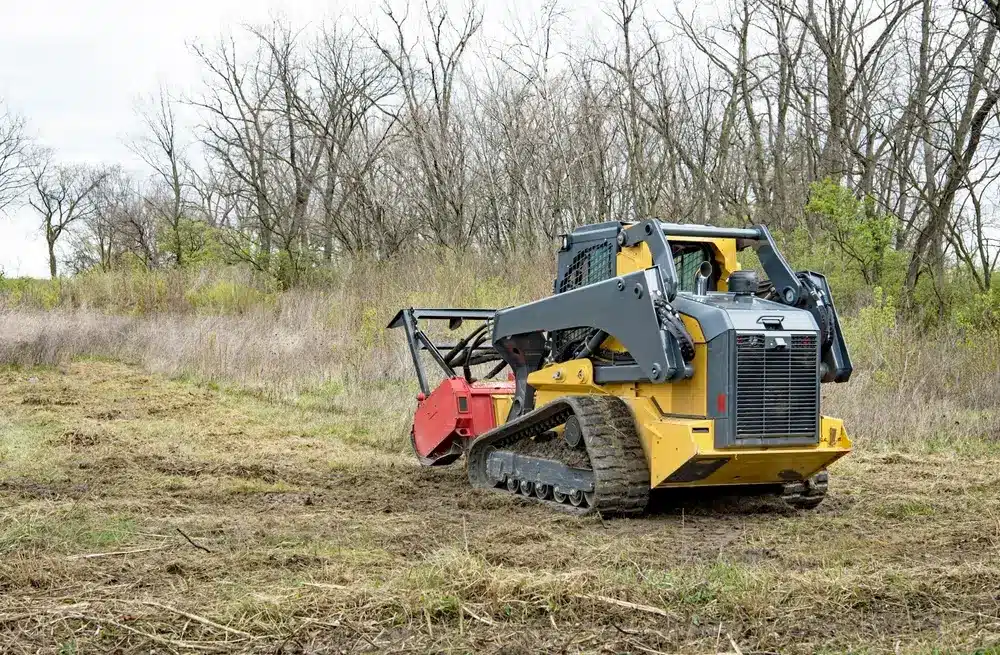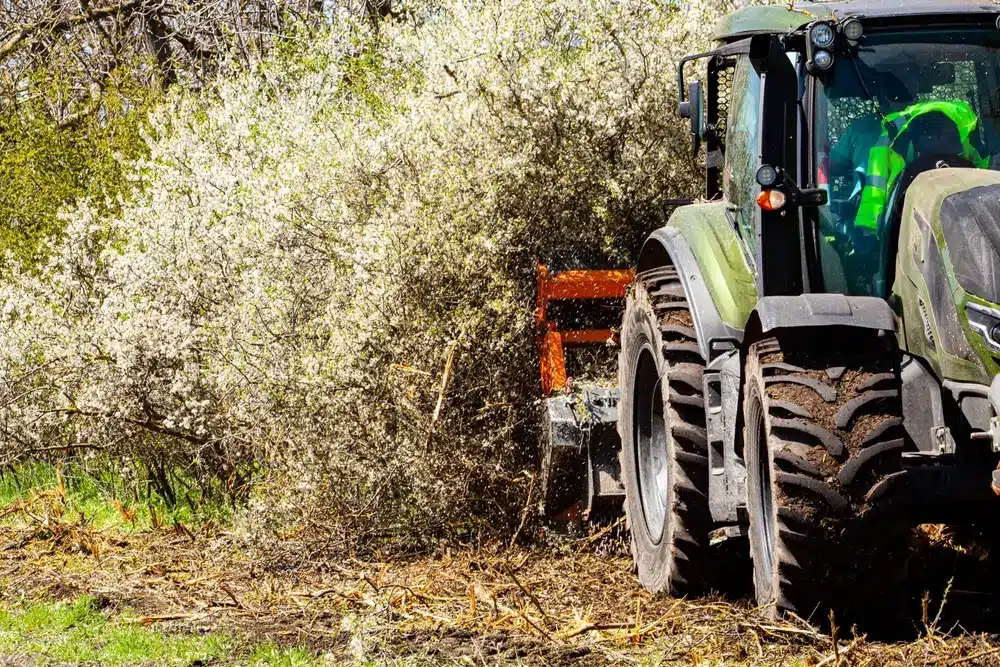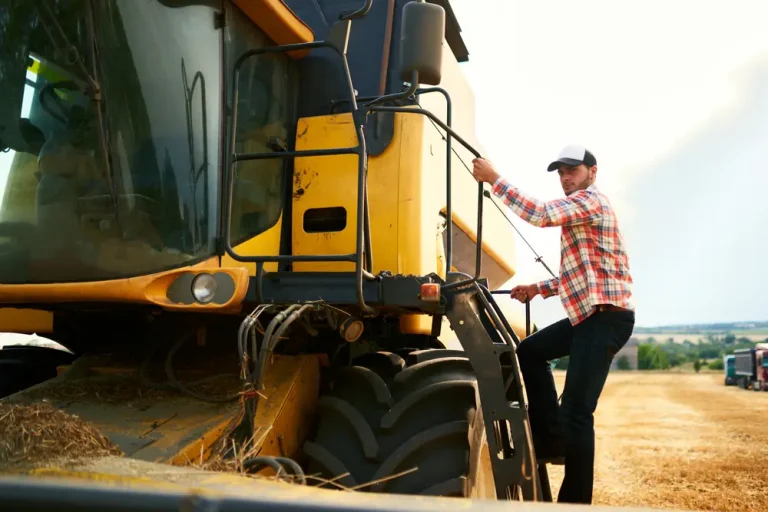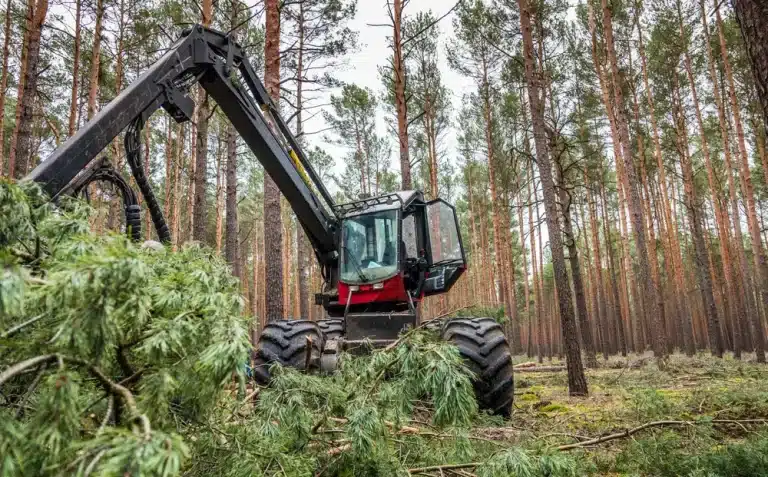Forestry work often unfolds in unpredictable cycles where equipment must adapt to changing needs.
Whether you are managing vegetation on steep slopes, reclaiming land after natural disasters, or maintaining large agricultural zones, deciding between renting or buying a mulcher shapes the pace and efficiency of your work.
This choice impacts how you control timing, budget, and equipment availability. From fast response operations in damaged forests to long-term brush management across rugged terrains, your financial strategy directly affects field performance.
If your project deals with various vegetation types or operates in fragile zones, such as wetlands or fire-prone areas, aligning your mulcher strategy with your land use objectives becomes essential.
Choosing between short-term flexibility and long-term investment
Choosing whether to rent or buy a forestry mulcher is not only a question of cost, it is also a matter of strategy and operational rhythm.
Projects vary in intensity, duration, and terrain, and so must the financial approach. Short-term needs, such as clearing after storms or preparing land for seasonal use, often call for fast, low-commitment access to machines, while repetitive or long-term operations benefit from having equipment always on hand.
The right decision depends on your business structure, your planning horizon, and how much control you need over scheduling and equipment availability.
This balance also influences your capacity to respond to unexpected vegetation growth or environmental threats, which is why this choice deserves more than just a price comparison.
It shapes how efficiently you deliver results across different use cases and project scales.
Rental options meet short bursts of intense work
Renting a forestry mulcher makes sense when you face temporary needs, like after a storm or when launching a one-off land clearing.
It offers flexibility, minimal upfront cost, and access to modern machines without responsibility for maintenance.
You can match equipment to vegetation density or terrain slope without committing long term.
When in a situation of disaster recovery, where urgency matters, rented mulchers can be sourced rapidly.
Learn how to stay safe when operating a mulcher in tough terrain.
Ownership creates value for repetitive work and large sites
Buying a mulcher becomes cost-efficient when land clearing is part of your regular workflow. If you operate a farm, a landscaping business, or manage large rural or forested zones, having your own machine guarantees availability and control.
Over time, ownership reduces hourly costs, especially if you know how to maintain your forestry mulcher for long-term performance. It also allows for custom setups based on your vegetation type and project scope.
Visit our services page to see how ownership fits different use cases, from pasture restoration to roadside clearing.
Project scale influences the right financial path
Smaller areas, seasonal jobs, or pilot projects usually favor rentals. In contrast, if you work on multiple sites, across months or years, or in regions with complex topography, purchasing becomes logical.
Read our comparison of skid steer mulchers vs spider excavator mulchers to match equipment to terrain and workflow scale.
Quick comparison of renting and buying a forestry mulcher
Deciding between renting and buying a forestry mulcher involves weighing costs, usage frequency, and project demands.
This quick comparison outlines the main benefits and limitations of each choice to guide you toward the most efficient and cost-effective solution for your vegetation management needs.
| Criteria | Renting a mulcher | Buying a mulcher |
| Initial investment | Low, pay only for the rental period | High upfront cost with full purchase |
| Usage flexibility | High, use the machine only when needed | Less flexible, machine is always available but with long-term commitment |
| Maintenance responsibility | Usually covered by the rental company | Full responsibility for upkeep and repairs |
| Duration of use | Suitable for short-term or occasional projects | Ideal for frequent or long-term use |
| Access to latest technology | Often access to newer models | Dependent on initial purchase, risk of aging equipment |
| Storage needs | No long-term storage required | Requires dedicated space for storing equipment |
| Budget predictability | Variable expenses, easier to manage for short projects | Fixed costs with depreciation over several years |
| Logistics impact | Simplified logistics with quick access | More complex logistics including transport and storage |
| Adaptation to terrain and project type | Flexibility to choose equipment suited for specific jobs | Single machine may be less versatile across projects |
| Financial risks | Limited risk regarding repairs and depreciation | Full financial risk including maintenance and resale value |
| Use in emergency situations | Highly useful for rapid deployment after disasters | Less suitable for urgent, one-off needs |
Cost considerations beyond the daily rate

Evaluating the true cost of renting versus buying a mulcher requires looking past the basic price tags.
Both options come with hidden expenses that can impact your overall budget and project efficiency.
Rental agreements often include fees beyond the daily rate, while ownership demands ongoing investments in fuel, maintenance, and storage.
Understanding these financial nuances is essential to making an informed choice that fits your operational needs and long-term plans.
Rental fees and added logistics can increase total costs
Renting a mulcher may seem straightforward with a clear daily or weekly fee, but the real costs often go beyond that.
Delivery charges, operator fees, and potential damage liabilities can significantly raise the final expense.
When you rely on rentals repeatedly or for extended periods, these additional fees add up fast, sometimes surpassing what ownership would cost.
Moreover, delays or extra rentals caused by unforeseen circumstances can disrupt your schedule and inflate budgets. This is especially true when working in sensitive or difficult environments like wetlands or steep slopes, where logistics are more complicated.
Ownership costs include depreciation and ongoing expenses
Buying a mulcher means a larger initial outlay, but ownership comes with benefits that spread costs over many projects.
Besides the purchase price, fuel, maintenance, repairs, and storage expenses add up, but these are investments toward reliability and control.
The more you use the machine, the lower the effective cost per hour becomes, improving your return on investment.
Owning also lets you customize or upgrade equipment to fit specific tasks or machine types, such as enhancing performance on skid steer mulchers.
Explore how to optimize mulcher performance on skid steer machines to make the most of your owned equipment.
Long-term savings depend on proper maintenance and care
A key factor in reducing total cost of ownership is consistent, thorough maintenance.
Regular servicing, hydraulic cleaning, and timely replacement of wear parts like cutting teeth keep the machine running efficiently and safely.
Proper upkeep not only extends the life of your mulcher but also prevents costly breakdowns and downtime.
Effective maintenance strategies contribute to sustainable land management practices by ensuring equipment reliability over time.
Our maintenance guide explains how to extend your machine’s life and ensure safety in every terrain.
Matching vegetation type with rental or ownership
Renting or buying a mulcher is closely tied to the kind of vegetation you need to manage.
The density, toughness, and growth patterns of plants all affect which equipment makes the most sense economically and operationally.
Understanding these factors helps optimize costs while maintaining environmental and project goals.
Dense forests and woody debris favor ownership for durability
When your projects regularly involve thick brush, large stumps, or mature trees, owning a heavy-duty drum mulcher provides unmatched strength and longevity.
This type of machine excels in extensive reforestation efforts, wildfire risk reduction, and large-scale construction site preparation.
Investing in ownership allows you to rely on consistent performance and handle demanding terrain without waiting for rental availability.
Learn what types of vegetation a mulcher can handle and choose the tool accordingly.
Grassy zones and light vegetation benefit from flexible rental solutions
Tasks like clearing grasslands, weeds, or soft-stemmed plants tend to be lighter and seasonal. Renting flail mulchers during peak growth periods offers a cost-effective approach without the burden of year-round ownership.
This strategy is particularly valuable near sensitive environments such as rivers or protected areas, where low-impact machinery used only as needed helps preserve the ecosystem. These practices contribute to sustainable land management approaches, as discussed in our related content.
Invasive species management often calls for a hybrid approach
Controlling fast-spreading plants such as kudzu, bamboo, or brambles requires repeated attention over several months.
A combined approach, renting extra equipment during intense clearing phases and owning mulchers for regular maintenance, often delivers the best results.
This flexible method balances cost and availability, adapting to fluctuating vegetation pressure.
For more tactics, see our article on post-disaster cleanup and vegetation suppression.
Operational control and job planning
Managing downtime, equipment readiness, and job site conditions are crucial factors whether you rent or buy a forestry mulcher. Both choices require careful preparation to optimize performance, reduce risks, and meet project goals. This section highlights how operational control varies between renting and owning, and why thorough planning and inspection matter for successful mulching work.
Advantages of renting for reducing downtime and ensuring fresh equipment
Rental fleets usually consist of newer mulcher models maintained by professional providers, which means fewer breakdowns and more reliable operation. However, availability depends on demand, especially after natural disasters or during busy seasons, so securing equipment early is essential. Before starting your job, inspecting the rented machine for wear and compatibility with your terrain can prevent unexpected delays. For more tips on safe operation, see our safety tips when operating a mulcher in tough terrain.
Benefits of ownership for autonomy and adaptability on site
Owning your mulcher offers freedom to schedule work at any time and adapt cutting methods to shifting vegetation or terrain conditions. Familiarity with the machine and site allows your crew to work more safely and efficiently, especially in challenging environments such as steep slopes or protected habitats. This control can improve project outcomes and reduce operational risks.
Consult our about page to understand how our expertise supports owners and contractors alike.
Essential preparation and inspection practices for both renting and buying
No matter your choice, success depends on thorough job planning, including site assessment, goal setting, and equipment matching. Inspecting the terrain for obstacles, adjusting machine speed, and choosing the right mulcher type tailored to vegetation density are critical steps to avoid breakdowns and maximize productivity. These practices ensure compliance with environmental standards and help you deliver high-quality results. Explore our guide on how to maintain your forestry mulcher for long-term performance for additional insights.
Key factors for deciding what works for your project

Choosing whether to rent or buy a mulcher depends on several critical factors that influence cost efficiency, project success, and operational ease.
Understanding how your project’s frequency, terrain challenges, and long-term goals interact with equipment needs helps ensure you select the best financial and strategic approach.
This section breaks down the key considerations to help you align your choice with your specific land clearing or vegetation management requirements.
Frequency and duration of use
How often you plan to use a mulcher is one of the most important factors in this decision. If your work requires mulching multiple times a year, typically more than three or four times, buying a machine becomes more cost-effective over time. Owning equipment means you avoid repeated rental fees and have the machine immediately available whenever needed. Conversely, for occasional or short-term projects, renting provides flexibility without the commitment of long-term ownership. Renting also relieves you from concerns about storage, maintenance, and transport logistics.
Terrain and vegetation complexity
The nature of the land and vegetation to be managed significantly impacts your equipment needs. Challenging environments such as steep slopes, riverbanks, or fire-prone zones often require specialized mulchers that are robust and adaptable. Owning machines like spider excavator mulchers can give you greater control and readiness to tackle difficult terrain without delay. Rental options might not always offer the precise equipment needed for unique conditions, making ownership a strategic advantage in these scenarios.
Long-term operational strategy
Your broader business goals and operational plans influence whether renting or buying is preferable. If your work involves isolated or sporadic projects, or if you want to test new markets, renting offers a low-risk way to access equipment without heavy investment. On the other hand, businesses expanding operations or committed to continuous land management benefit from owning mulchers, which ensures consistent availability and the ability to customize or upgrade equipment to meet evolving demands. Ownership also facilitates better control over maintenance schedules and operational readiness.
Make your project efficient and cost-effective
Strategically matching your business needs with the right mulcher model saves time, lowers risks, and increases success rates.
- Renting suits urgent, one-off, or seasonal work, especially when land is flat and vegetation light.
- Buying becomes an investment when jobs are large, frequent, or require powerful, adapted machines.
Use our free quote page or contact our team for guidance tailored to your terrain and workload.



